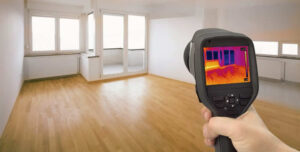How to Inspect If Your Residence Has a Hidden Leak
How to Inspect If Your Residence Has a Hidden Leak
Blog Article
Listed here down the page you might get a lot of outstanding answers all about Detecting hidden plumbing leaks.

Early discovery of dripping water lines can reduce a possible disaster. Some small water leakages may not be visible.
1. Check Out the Water Meter
Every residence has a water meter. Inspecting it is a proven manner in which aids you find leakages. For starters, shut off all the water resources. Make sure no one will flush, use the faucet, shower, run the washing maker or dishwasher. From there, most likely to the meter and also watch if it will transform. Considering that no person is utilizing it, there ought to be no activities. That indicates a fast-moving leakage if it moves. If you detect no modifications, wait a hr or two and also inspect back once more. This implies you may have a slow leakage that might even be below ground.
2. Examine Water Intake
If you find abrupt modifications, despite your intake being the exact same, it suggests that you have leaks in your plumbing system. An abrupt spike in your expense suggests a fast-moving leak.
At the same time, a constant boost on a monthly basis, even with the exact same routines, shows you have a slow leakage that's additionally slowly escalating. Call a plumber to extensively check your property, specifically if you really feel a cozy area on your flooring with piping beneath.
3. Do a Food Coloring Examination
30% comes from bathrooms when it comes to water consumption. Examination to see if they are running properly. Drop specks of food shade in the container and wait 10 mins. There's a leak between the storage tank as well as bowl if the color somehow infiltrates your bowl during that time without flushing.
4. Asses Exterior Lines
Do not fail to remember to examine your outside water lines too. Needs to water seep out of the connection, you have a loose rubber gasket. One little leakage can squander lots of water as well as spike your water bill.
5. Analyze the circumstance and inspect
Home owners need to make it a practice to inspect under the sink counters and also even inside cupboards for any bad odor or mold and mildew development. These 2 red flags suggest a leak so prompt attention is required. Doing regular inspections, also bi-annually, can save you from a significant problem.
Examine for stainings and compromising as many devices as well as pipes have a life expectations. If you presume dripping water lines in your plumbing system, do not wait for it to rise.
Early detection of leaking water lines can minimize a possible calamity. Some little water leakages might not be noticeable. Checking it is a surefire method that assists you discover leaks. One small leak can lose bunches of water and also spike your water costs.
If you believe dripping water lines in your plumbing system, do not wait for it to rise.
WARNING SIGNS OF WATER LEAKAGE BEHIND THE WALL
PERSISTENT MUSTY ODORS
As water slowly drips from a leaky pipe inside the wall, flooring and sheetrock stay damp and develop an odor similar to wet cardboard. It generates a musty smell that can help you find hidden leaks.
MOLD IN UNUSUAL AREAS
Mold usually grows in wet areas like kitchens, baths and laundry rooms. If you spot the stuff on walls or baseboards in other rooms of the house, it’s a good indicator of undetected water leaks.
STAINS THAT GROW
When mold thrives around a leaky pipe, it sometimes takes hold on the inside surface of the affected wall. A growing stain on otherwise clean sheetrock is often your sign of a hidden plumbing problem.
PEELING OR BUBBLING WALLPAPER / PAINT
This clue is easy to miss in rooms that don’t get much use. When you see wallpaper separating along seams or paint bubbling or flaking off the wall, blame sheetrock that stays wet because of an undetected leak.
BUCKLED CEILINGS AND STAINED FLOORS
If ceilings or floors in bathrooms, kitchens or laundry areas develop structural problems, don’t rule out constant damp inside the walls. Wet sheetrock can affect adjacent framing, flooring and ceilings.
https://www.servicemasterbyzaba.com/blog/how-to-detect-water-leakage-in-walls/

We were introduced to that write-up on Finding hidden leaks from an acquaintance on a different blog. Sharing is caring. You just don't know, you may be doing someone a favor. Thank-you for going through it.
Report this page